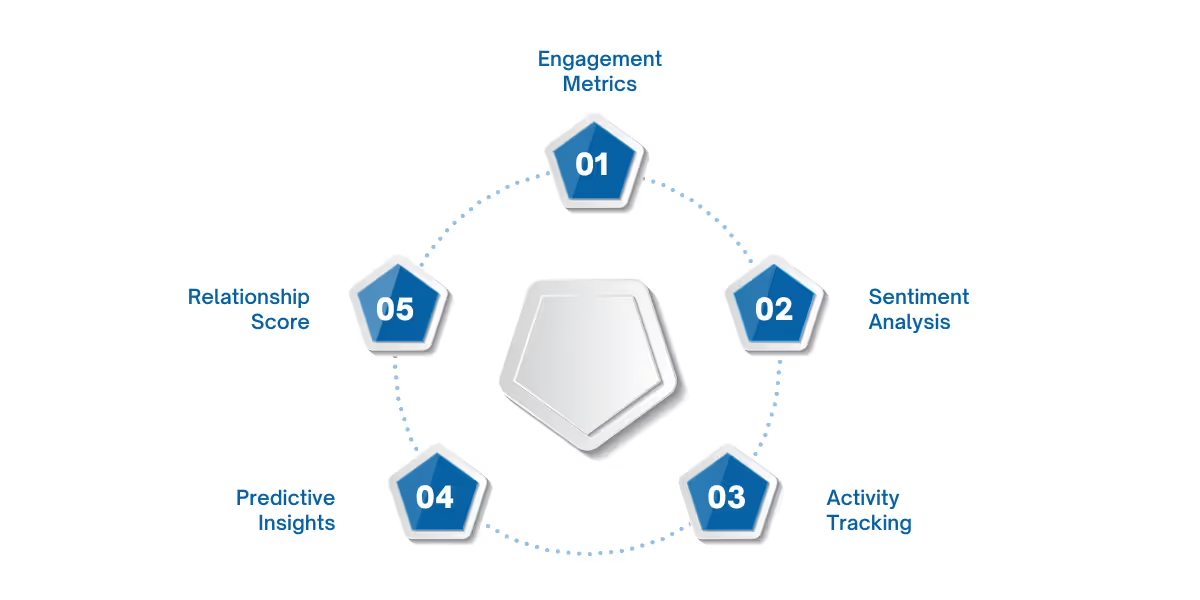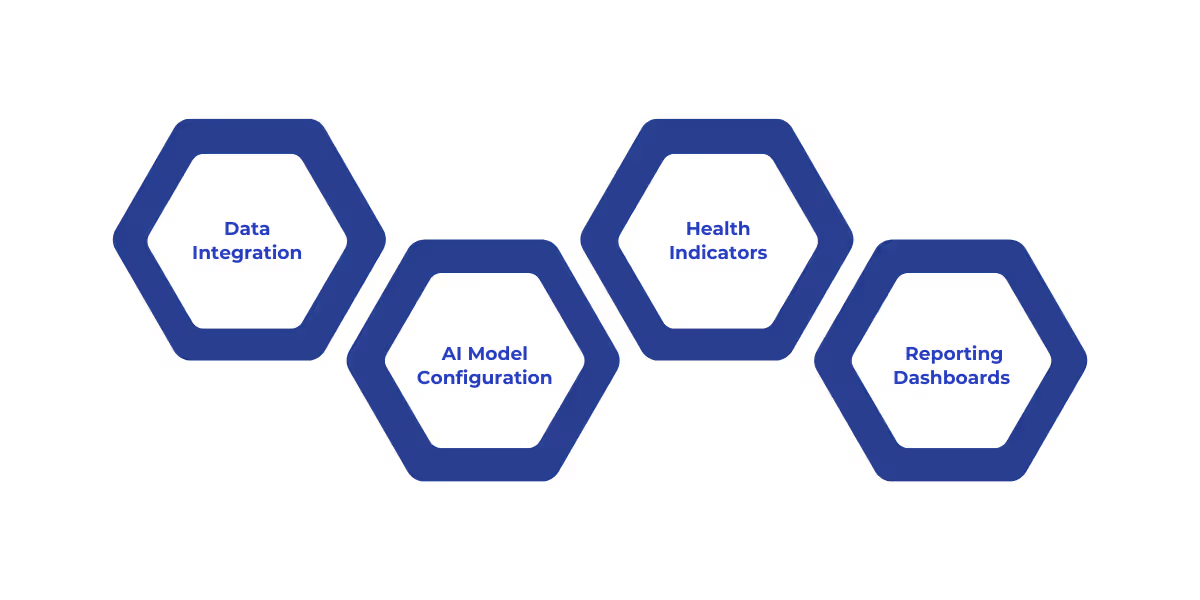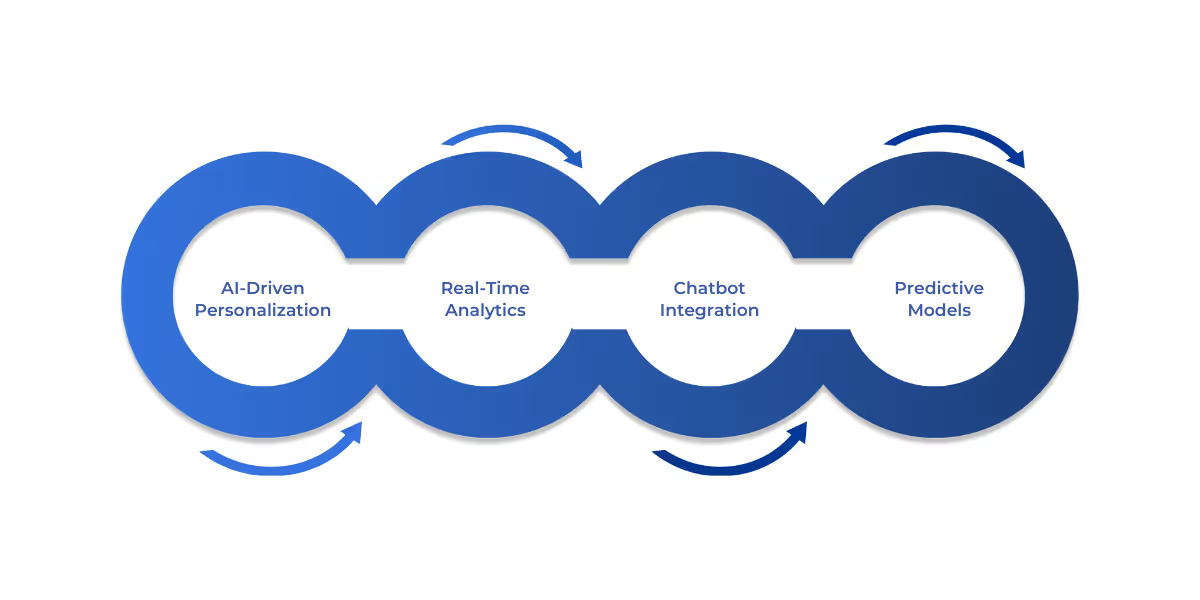

Managing customer data and aligning sales and marketing teams can often be a challenging task. Relationship Analytics in Microsoft Dynamics 365 Sales uses AI-driven insights to optimize customer relationship management.
By analyzing historical data, customer interactions, and predictive models, it provides a comprehensive view of relationship health. This capability is used across sales teams, customer service departments, and marketing functions to improve engagement strategies.

Relationship Analytics in Dynamics 365 consists of several key components that enable businesses to assess the health of their customer relationships.
Some key components include:
These components together form a complete system for assessing and managing the quality of customer relationships in real time.
Also Read: Understanding Microsoft Dynamics 365 Customer Engagement

Setting up Relationship Analytics involves configuring Dynamics 365 to capture and analyze customer data effectively.
It requires setting up the correct data sources, AI data analytics models such as sentiment analysis and predictive insights, and integrating communication tools to generate actionable insights.
Here is a step-by-step method:
1. Data Integration:
To begin, integrating communication channels (e.g., email, calendar, meetings) with Dynamics 365 is crucial. This allows the system to gather customer interaction data across multiple touchpoints.
2. AI Model Configuration:
Dynamics 365 includes built-in AI models for sentiment analysis, predictive insights, and activity tracking. These models should be configured based on specific sales goals and customer profiles.
3. Customizing Relationship Health Indicators:
Dynamics 365 allows customization of what constitutes a “healthy” relationship. Sales managers can adjust the thresholds for engagement, sentiment, and activity based on their unique business needs.
4. Establishing Reporting Dashboards:
Reporting tools in Dynamics 365 enable the visualization of relationship health data. Dashboards should be tailored to display metrics that align with specific sales strategies or customer categories.
Now, let’s explore how to effectively analyze relationship health to maximize the impact of your setup.
To effectively analyze relationship health, businesses must leverage data from various touchpoints to assess customer engagement, sentiment, and behavior. For example, a sales team might use relationship analytics to identify that a high-value client has suddenly reduced their engagement.
Using predictive scoring and sentiment analysis, the team can proactively intervene before the client decides to churn.
Here are some of the key advancements in Relationship Analytics, showcasing how AI and machine learning are transforming customer relationship management:
Also Read: Guide to Security Roles in D365 Finance & Operations
Despite the powerful capabilities of Relationship Analytics, businesses often face challenges in data integration, system adoption, and interpretation of analytics. Understanding these challenges and applying best practices can mitigate these risks.

Advancements in artificial intelligence, machine learning, and real-time data processing will shape the future of Relationship Analytics in Dynamics 365 Sales.
As AI technology continues to advance, the ability to predict and manage customer relationships will also improve.
For example, an AI model may detect that a customer has shifted from neutral to negative sentiment after a customer service interaction. The system would trigger a response, such as an outreach email or call from a sales representative, to mitigate the risk of customer churn.
At WaferWire, we empower enterprises and mid-market companies to use cloud technologies, AI, and data analytics for digital transformation. Our team provides end-to-end services to implement and optimize Dynamics 365 Relationship Analytics.
Our Approach:
With experience across industries like retail, manufacturing, financial services, and utilities, WaferWire ensures your digital transformation is efficient and impactful
Implementing Relationship Analytics in Dynamics 365 presents challenges like data accuracy, user adoption, and integration. By focusing on clean data, intuitive systems, and seamless integration, businesses can gain valuable insights.
Continuously refining processes ensures that Relationship Analytics effectively improves customer management and drives sales performance.
At WaferWire, our experts specialize in guiding large-scale businesses through the implementation and optimization of Relationship Analytics in Dynamics 365.
Contact WaferWire today to take your customer relationship management to the next level.
Q: How often should Relationship Analytics be updated in Dynamics 365?
A: Regular updates should be made based on ongoing customer interactions and sales activities. It’s recommended to sync data at least daily for real-time insights.
Q: Can Relationship Analytics integrate with other CRM tools outside of Dynamics 365?
A: Yes, Dynamics 365 allows integration with other CRM systems and third-party tools through APIs, ensuring that data from various platforms can be consolidated for a comprehensive view.
Q: Does Relationship Analytics support mobile usage?
A: Yes, Dynamics 365’s mobile app allows sales teams to access relationship health insights on the go, ensuring that teams can act on critical data in real-time from anywhere.
Q: What role does AI play in sentiment analysis?
A: AI-powered sentiment analysis processes communication content (emails, calls, meetings) to detect positive, negative, or neutral sentiment, helping teams adjust engagement strategies accordingly.
Q: How can Relationship Analytics help with customer retention?
A: By identifying at-risk customers through predictive insights and monitoring sentiment shifts, businesses can proactively engage with customers to resolve issues and prevent churn.

